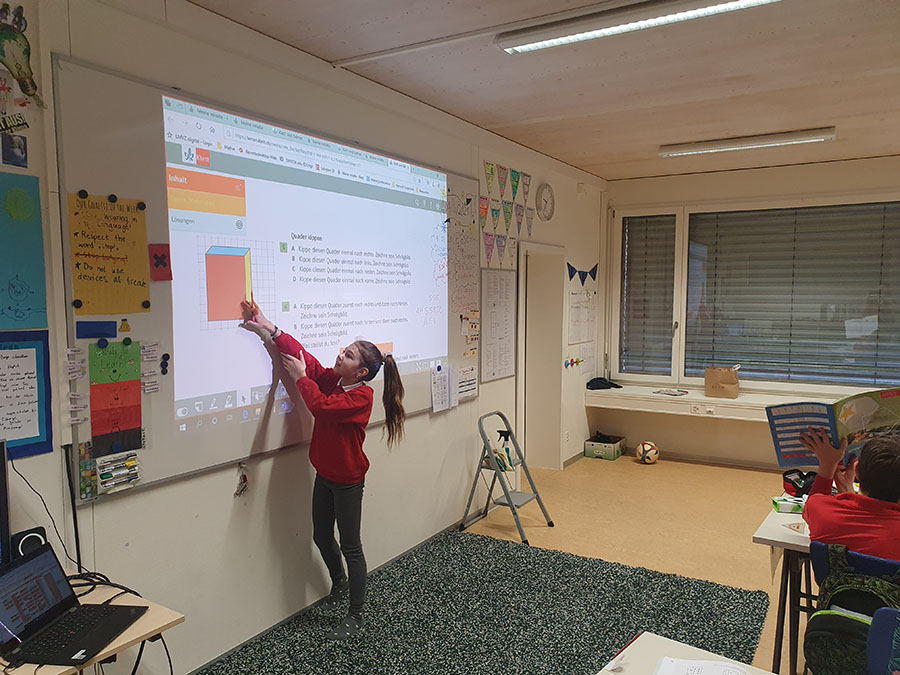Education of the 21st century
Transdisciplinary learning in a bilingual elementary school
- Curiosity: the ability to ask questions and explore how the world works.
- Creativity: the ability to develop new ideas and apply them in practice
- Criticism: the ability to analyze information and ideas, as well as develop reasoned arguments and judgments
- Communication: the ability to express thoughts and feelings clearly and confidently in a wide range of media
- Collaboration: the ability to work constructively with others
- Compassion: the ability to empathize with others and act accordingly
- Composure: the ability to connect with the inner world of emotions and develop a sense of personal harmony and balance.
- Citizenship: the ability to participate constructively in shaping society.
What is transdisciplinary learning?
Transdisciplinary learning enables students to create connections between various school subjects while exploring a relevant concept, issue, or problem. It integrates the perspectives of the common school disciplines to get a deeper understanding of the versatility of the concept.
Why is transdisciplinary learning important?
Transdisciplinary learning is important because it helps create these connections by getting the same idea across various subjects and explaining it in a practical way, which is easy to understand. It is so important nowadays that students learn to solve problems creatively. They need to know that there is often more than just one way to solve a problem.
Moreover, various studies show that varying learning methods and materials improve retention and recall of information by students.
The learning pyramid, developed by the U.S. National Training Laboratory, suggests that most students only remember about 10% of what they read from textbooks, but retain nearly 90% of what they learn through teaching others.
Transdisciplinary learning helps our teachers to apply various and the most effective teaching methods, as listed in the pyramid, and thus help students remember their lessons.
How does transdisciplinary learning look in a classroom?
The curriculum of the Bilingual Elementary School is built around 6 general themes for the year and all the subjects are linked around each theme. By keeping the general themes the same for each grade, teachers can provide consistency and track progression over the years.
All the lessons are very interactive, creative and promote teamwork. Our elementary school students work with tablets and M365 to develop critical digital skills.

Advantages of transdisciplinary approach in education
- Students develop divergent thinking and creativity. The modern education system fosters convergent thinking, which means applying a fixed set of rules to arrive at a single solution to the problem. On the other hand, divergent thinking is a more free-flowing process, leading to several creative solutions to a single task. Both divergent and convergent thinking are important, but encouraging only the latter can lead to loss of creativity and critical thinking, which are the essential skills in the 21st century.
- Students see more meaning in what they learn. Many students learn because they are told so by their school and their parents. The transdisciplinary approach connects one topic to many school subjects, allowing students to understand the topic much deeper, see the connections, and realize why they are learning about it. This system also makes it easier for them to remember what they learned.
- Students are more motivated. Connecting a topic to various school subjects requires a certain level of creativity from teachers. It makes the lessons more engaging and, as our experience shows, creates curiosity and motivation in students to discover one topic from different and sometimes even unexpected angles.
- Students learn a language of a problem. Transdisciplinary learning encourages students to look at one problem from various angles. They learn the versatile nature of a real-life situation, develop critical thinking and understand, that there is usually more than one way and more than one right solution to a single problem. This kind of thinking is very appreciated and sought after by many headhunters these days.
- Students build up confidence. The transdisciplinary approach encourages students to speak up their opinion in class, even though it might be wrong. It helps students build up confidence and talk more easily, without being afraid of punishment with bad grades or peer judgment.



